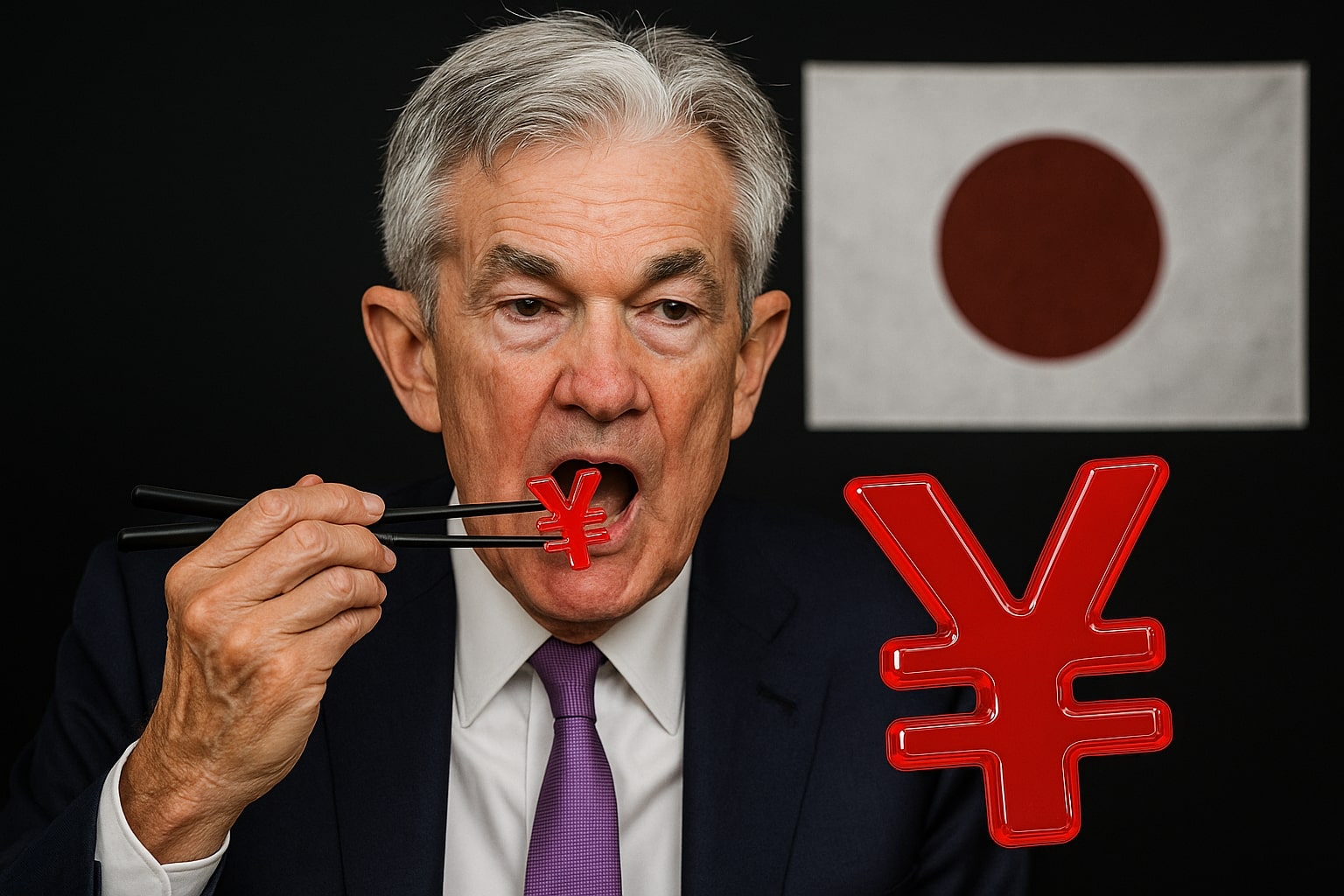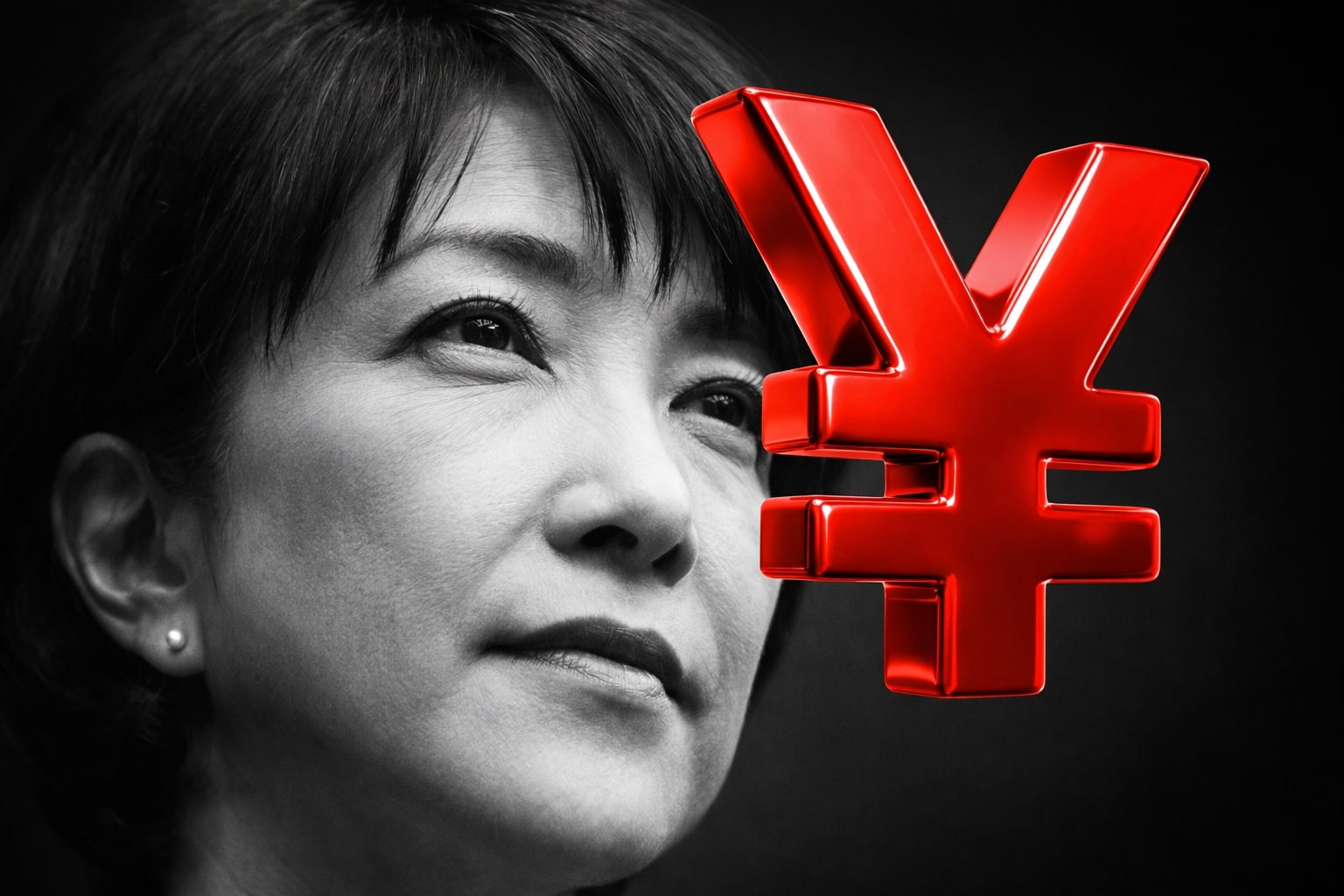
USD/JPY Price Forecast - USDJPY=X Nears 155.00 as Japan’s Weak Yen Collide
The dollar-yen pair climbs to multi-month highs at 154.00, fueled by widening yield gaps and dovish Bank of Japan | That's TradingNEWS
USD/JPY (USDJPY=X) Surges Toward 155.00 as Rate Divergence, Inflation Pressures, and Intervention Fears Collide
The USD/JPY (USDJPY=X) pair continues to hover near the 155.00 psychological ceiling, its highest zone since early 2025, as the dollar strengthens against a deeply pressured yen. The move reflects widening policy divergence between the Federal Reserve and the Bank of Japan, reinforced by Tokyo’s political sensitivity to imported inflation and a fresh wave of speculation over direct market intervention. The pair ended the week at 154.004, gaining 0.74%, marking its highest weekly close since January 27. The yen’s weakness intensified despite hotter Tokyo inflation, underscoring that the BoJ’s 0.5% rate remains insufficient to attract capital inflows.
Fed Policy Tightens the Grip on USD/JPY Momentum
Fed Chair Jerome Powell’s late October statement dismantled market expectations for a December rate cut, pushing U.S. yields higher and reigniting dollar demand. The Fed’s decision to hold the benchmark rate and caution that cuts are “not a given” triggered an upward reset in U.S. Treasury yields, especially the 10-year, which sits near 4.35%. The shift recalibrated risk premiums and boosted the USD/JPY (USDJPY=X) pair, as carry traders re-entered dollar-long positions. Traders now price only a 63% chance of a December cut versus 90% a week earlier, signaling the dollar’s rate advantage is firmly intact.
BoJ’s Reluctance and Japan’s Economic Constraints
The Bank of Japan once again left its benchmark rate at 0.5%, even as inflation pressures build domestically. Governor Kazuo Ueda stated that the bank needs “more time” to evaluate wage and price data, referencing companies’ slower pay increases amid 15% tariff pressures on exports. Japan’s Manufacturing PMI slipped from 48.5 to 48.3, while Services PMI fell from 53.3 to 52.4, both hinting at weakening domestic demand. Wage growth also stalled, with average cash earnings up only 1.6% year-on-year versus July’s 3.4% surge. These metrics reinforce the BoJ’s dovish stance — one that continues to suppress yen demand even as real inflation remains sticky.
Japan’s Intervention Playbook and Political Crossfire
As USD/JPY edges toward 155.00, Tokyo’s financial corridors have reawakened with talk of intervention. Finance Minister Katayama issued a pointed warning that “patience has limits,” echoing Japan’s previous defense operations at 155 in October 2022 and 160 in May 2024. Those interventions were triggered by monthly yen depreciations exceeding 4–5%, a rhythm now repeating. Intervention is a blunt instrument — costly and often short-lived — but politically unavoidable as the yen’s weakness becomes a public flashpoint amid rising import prices. Tokyo’s Ministry of Finance holds approximately $1.1 trillion in reserves, yet the timing of its moves has historically aimed for psychological impact, using stealth operations around round numbers to amplify market uncertainty.
Tariffs, Wages, and Trade Flows Tighten Policy Divergence
U.S. trade tariffs on Japanese industrial exports continue to squeeze profit margins, forcing Japanese firms to trim wage growth. Lower wages reduce domestic consumption and curb inflation momentum, undermining the BoJ’s long-stated goal of achieving a self-sustaining inflation cycle. The yen’s depreciation, while supporting exporters, has simultaneously elevated import costs, particularly in energy. With Brent crude trading near $84.10 per barrel, Japan’s import bill has surged over 18% year-on-year, directly eroding consumer purchasing power. That dynamic creates the paradox driving USD/JPY (USDJPY=X) higher — a weak currency meant to stimulate exports is now a political liability.
Technical Structure and Key Levels in USD/JPY (USDJPY=X)
The pair remains firmly bullish, trading above both the 50-day and 200-day EMAs, signaling continuation potential. The breakout above 153.00 confirmed a structural shift, converting previous resistance into firm support. The next resistance levels are 155.00, 155.880, and 156.884, while downside pivots sit at 153.00, 151.50, and the 149.358 support band. A daily close above 154.415 — the October 31 high — would likely accelerate momentum toward the upper resistance zone. Momentum indicators reinforce this bias, with RSI at 67 and no divergence yet visible. Volatility remains subdued but poised to expand on any policy signal from either central bank.
Macro Events and Data Calendar Impacting USD/JPY (USDJPY=X)
Market focus now shifts to a dense macro calendar. The ISM Manufacturing PMI (forecast 49.2) and ISM Services PMI (expected 51.0) will gauge U.S. economic strength. ADP Employment is projected at +25k, and Nonfarm Payrolls are expected to rise by 55k, with unemployment stable at 4.3% and average hourly earnings at 3.6% year-over-year. Stronger prints across these data points could reinforce the Fed’s hawkish tone, driving USD/JPY closer to 156.00. Conversely, weak results could open a corrective window toward 153.00. Japan’s side of the ledger includes the Reuters Tankan Index, household spending data, and import price figures, all critical in shaping the BoJ’s cautious messaging.
Read More
-
IVE ETF Near $212: Is This S&P 500 Value Play Still Cheap for 2026?
20.12.2025 · TradingNEWS ArchiveStocks
-
XRP ETFs XRPI at $11.07 and XRPR at $15.76 Power $1.2B Inflows as XRP Fights for $2
20.12.2025 · TradingNEWS ArchiveCrypto
-
Natural Gas Price Forecast: NG=F Tests $3.60 Support as LNG Boom and $5 Henry Hub Calls Build Into 2026
20.12.2025 · TradingNEWS ArchiveCommodities
-
USD/JPY Price Forecast - Pairs Surges After BoJ’s 0.75% Hike as Pair Eyes 161.50 Resistance
20.12.2025 · TradingNEWS ArchiveForex
Sentiment, Flows, and Carry Trade Dynamics
Positioning data from CFTC shows leveraged funds expanding net long exposure to the dollar against the yen by 6% week-on-week, while retail sentiment remains split, with retail shorts increasing near the 155.00 mark. The carry trade remains lucrative — the U.S.-Japan yield differential above 4% continues to draw capital into dollar assets. Yet, intervention risk is acting as a volatility suppressant, with options markets pricing elevated implied vols at 10.8% for one-month tenors. Institutional flow tracking suggests Tokyo-based corporates are accelerating dollar conversions to hedge import costs, adding further spot market pressure.
Political Risk and Market Psychology
Prime Minister Sanae Takaichi’s cabinet faces growing voter discontent over household energy costs, forcing the government into a policy corner. A weak yen is no longer viewed as supportive — it has become symbolic of lost control over Japan’s economy. The USD/JPY level has thus transformed from a market indicator to a political threshold. Intervention, if launched, will likely be tactical and swift, with Tokyo targeting 1–2 yen reversals rather than a sustained correction. Markets remember that previous interventions temporarily pulled USD/JPY back by 3–5 yen, only for the dollar to regain strength weeks later.
Outlook and Investment Stance for USD/JPY (USDJPY=X)
The evidence overwhelmingly favors continued U.S. dollar strength. Fed restraint on rate cuts, robust U.S. labor data, and a stagnant Japanese monetary stance all reinforce a widening rate gap. The near-term trajectory points to USD/JPY retesting 155.880 and potentially breaking toward 156.884 unless Tokyo intervenes. On any intervention-led pullback to 151.50–153.00, the pair offers an attractive long-entry zone backed by fundamentals. The only meaningful bearish catalyst would be a coordinated U.S.-Japan verbal intervention or a surprise BoJ policy shift, neither of which appears imminent. Based on current data and structural divergence, the USD/JPY (USDJPY=X) remains a BUY, with short-term targets at 155.80–156.80 and a potential long-term extension toward 160.00 if global liquidity remains tight.



















